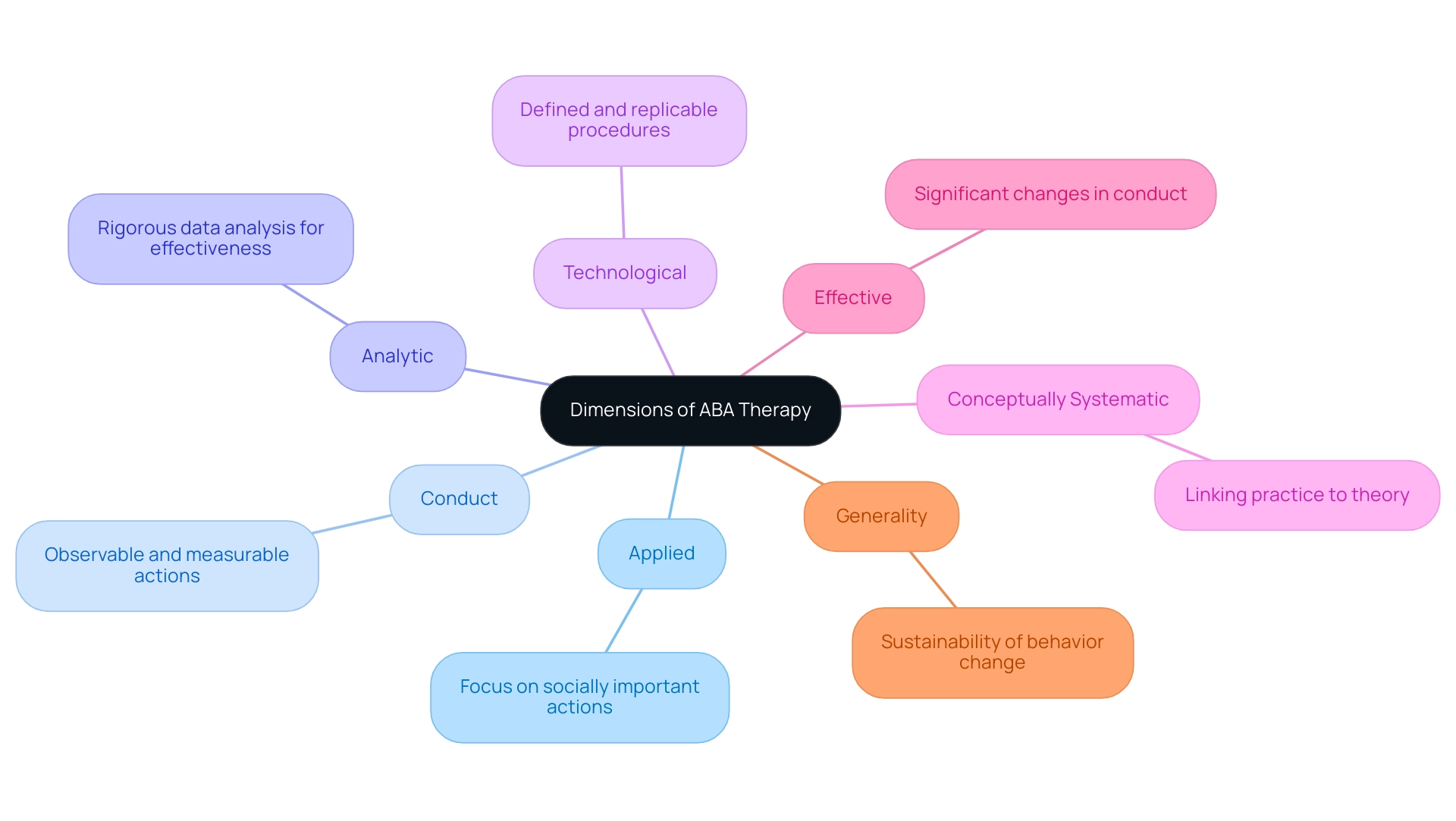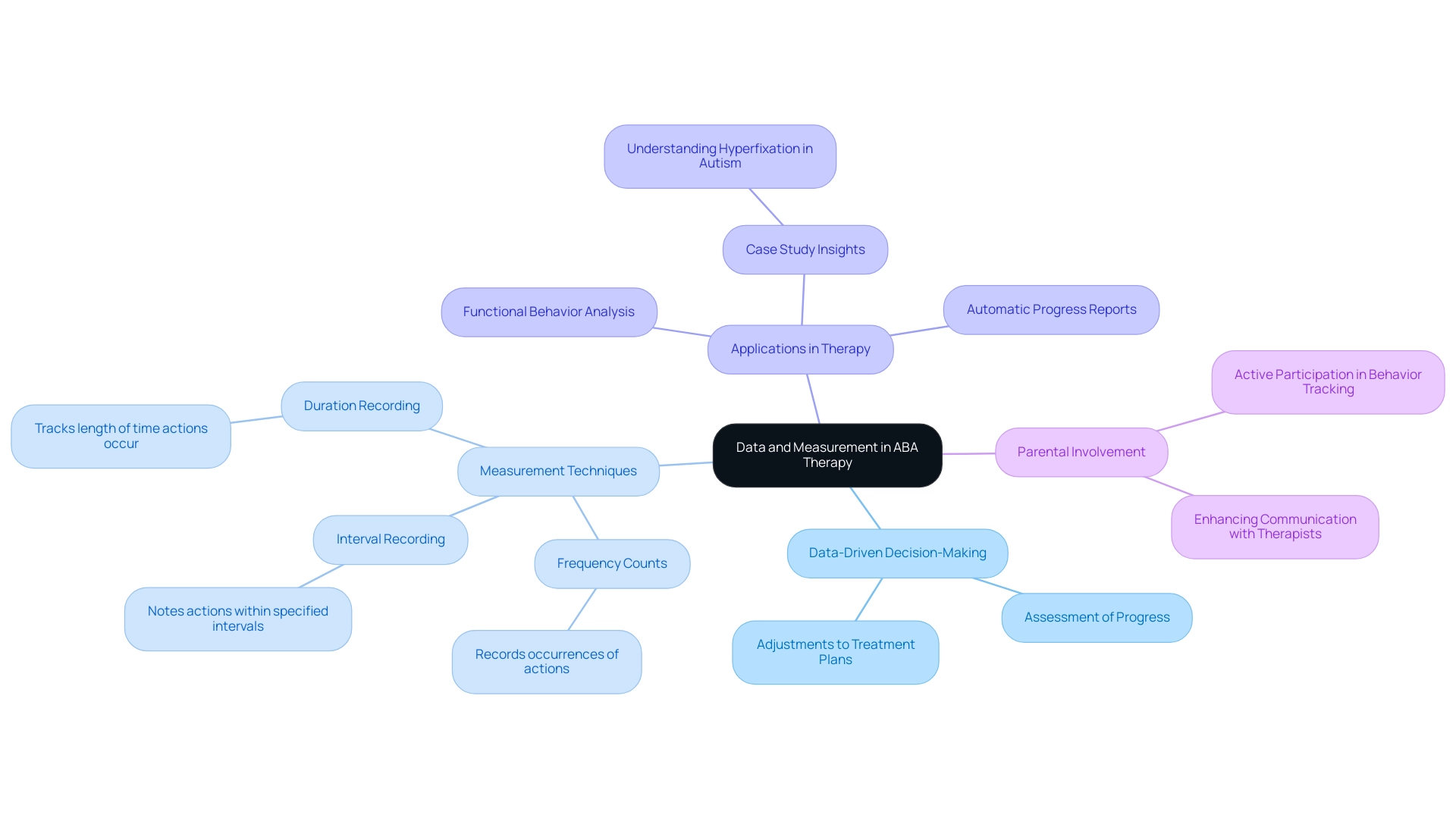In the realm of child development, Applied Behavior Analysis (ABA) therapy stands out as a pivotal approach for understanding and modifying behaviors, particularly in children diagnosed with autism. With its roots firmly planted in behaviorism, ABA employs systematic techniques to break down complex skills into manageable steps, reinforcing positive actions while addressing challenging behaviors.
As the prevalence of autism continues to rise, with approximately 1 in 100 children affected globally, the significance of ABA therapy becomes increasingly apparent. This article delves into the core principles and practical applications of ABA, exploring its seven foundational dimensions, effective strategies, and the critical role of data-driven decision-making in shaping successful interventions.
By equipping parents with knowledge and insights into ABA therapy, this discussion aims to empower them to actively support their child's development and navigate the complexities of autism with confidence and clarity.
Applied Behavior Analysis (ABA) therapy signifies a scientifically validated method aimed at understanding and altering actions through systematic techniques that break down skills into manageable dimensions aba and reinforce positive actions. Rooted in the principles of behaviorism, the dimensions aba emphasize the critical connection between actions and environmental influences. With an estimated 1 in 100 young individuals worldwide diagnosed with autism, the dimensions ABA therapy are becoming increasingly vital.
This therapy has dimensions aba, as it is broad in scope, encompassing the teaching of new skills while simultaneously addressing and reducing difficult actions. Recent advancements, including AI-driven progress report automation, enable clinicians to create automatic progress reports based on functional activity analysis, freeing up to 50% more time for direct treatment of young patients. The behavior care engine performs functional behavior analysis by identifying target behaviors and skills, enabling clinicians to track progress efficiently.
This enhancement not only promotes efficiency but also supports caregivers in their vital role. For parents, understanding these fundamental concepts is crucial, as they support effective strategies tailored to their offspring's specific needs. Studies indicate that youngsters who receive early support are more likely to thrive in standard educational settings and attain higher employment rates in adulthood.
As emphasized in the case study on the dimensions aba regarding the significance of early support, it is vital for enhancing the overall growth of youth with autism, providing them with necessary coping skills and strategies. The advantages of caregiver training further strengthen this initiative; empowered caregivers armed with dimensions aba can actively assist their offspring's developmental objectives, enhancing professional support and promoting consistency at home. As noted by L. Lukas, 'Why is early intervention for autism so important?'
The early implementation of ABA can significantly enhance communication, social skills, and independence. By focusing on dimensions aba, ABA therapy seeks to improve the overall quality of life for children with autism and their families, leading to lasting benefits that extend into adulthood.
The seven dimensions aba of Applied Behavior Analysis (ABA) therapy are foundational to its effectiveness in fostering change, especially when guided by qualified analysts. They are:
Each dimension of ABA is integral to developing effective interventions tailored to individual needs, ultimately fostering long-term success and improved quality of life.
Moreover, the incorporation of AI-driven progress report automation in our services enhances efficiency, freeing up 50% more time for child treatment. This enables analysts to concentrate on developing personalized plans that incorporate measurable objectives and evidence-based strategies, while also guaranteeing continuous assessment and adjustment of these plans to enhance outcomes.
Notably, School-wide Positive Behavior Support (SWPBS), which has been implemented in more than 18,000 schools in the United States, exemplifies the application of these dimensions aba in educational settings.
As Hill M. Walker stated, 'Walker and the other authors of this article were among the first to translate three-tiered prevention logic into an educational setting,' highlighting the foundational research that supports the integration of ABA principles in school environments. The case study on School-Wide Positive Support demonstrates the practical implications of dimensions aba, emphasizing the importance of a structured approach to management in schools, which aligns with the ongoing evaluation and modification necessary for effective program development.

At the core of effective Applied Behavior Analysis (ABA) therapy are the dimensions aba that include the principle of positive reinforcement, a technique designed to encourage desired actions by rewarding them. This flexible method not only raises the chances of these actions taking place but also promotes a nurturing educational atmosphere customized to each individual's distinct requirements. Notably, achieving progress is observed in 90% of youngsters when recommended hours are fully implemented with active caregiver involvement.
Key strategies employed in ABA include:
Caregiver involvement is paramount; families are encouraged to actively participate in the dimensions aba of the therapeutic process. By applying these techniques regularly and using data from progress reports, caregivers can improve support at home, ensuring alignment with professional guidance and promoting consistency. Our conduct care engine updates intervention and skill acquisition plans after each session based on achieved progress, underscoring the continuous improvement of treatment plans.
According to the requirements for Registered Behavior Technicians, individuals must have a minimum of a high school diploma and complete 40 hours of specialized training, which highlights the professionalism involved in delivering dimensions aba therapy. When these dimensions aba techniques are implemented consistently, they can lead to substantial improvements in a child's learning and behavioral outcomes across various settings.
A case study titled "What is ABA Therapy?" highlights how ABA therapy often serves as the first recommendation for families facing an autism diagnosis, providing foundational support during challenging times. As emphasized by the Center for Autism,
For young and old, ABA can help individuals manage some of the lifestyle challenges that accompany many mental and physical health conditions.
However, it is essential to consider ongoing debates surrounding ABA therapy. The neurodiversity perspective critiques ABA for attempting to 'normalize' actions, viewing autism as a normal variation of brain function rather than a disorder. Such insights underscore the transformative potential of ABA therapy and the importance of positive reinforcement as a foundational element while acknowledging the complexities of its application within the dimensions aba.
Data-driven decision-making serves as a foundational element in the dimensions aba of Applied Behavior Analysis (ABA) therapy. Practitioners systematically gather data on targeted actions, enabling them to assess progress and make necessary adjustments to treatment plans. Our automatic data collection process records clinical sessions without interruption, ensuring our clinical team is consistently present for your loved one.
All data is securely stored, anonymized, and deleted after analysis, providing peace of mind regarding privacy. Common measurement techniques employed in this process include:
These techniques enable therapists to evaluate the effectiveness of approaches and ensure that strategies are finely adjusted to meet the young individual's evolving needs.
Additionally, our behavior care engine performs functional behavior analysis for target behaviors and skills, generating automatic progress reports that summarize findings and are available for clinician review. This feature further enhances the data-driven approach, allowing for timely adjustments in therapy. As Ralph Moller emphasizes, 'It is crucial to understand that while environmental factors may influence certain aspects of autism, they are not the sole cause of the increasing prevalence rates.'
This highlights the importance of comprehensive data collection in understanding the multifaceted nature of autism. Furthermore, equipping caregivers with ABA principles and strategies encourages active participation in supporting their offspring's behavioral objectives, establishing a steady and nurturing atmosphere that enhances the effect of the program. Insights from the case study titled 'Understanding Hyperfixation in Autism' illustrate how measurement techniques can be applied in practice.
By identifying specific hyperfixations, practitioners can customize strategies that not only address challenges but also leverage these intense interests for learning and engagement. Parental involvement is essential; by actively participating in behavior tracking, parents enhance communication with therapists and play a significant role in their offspring's success. This collaborative approach not only empowers parents but also ensures that interventions are tailored to the unique profiles of children on the autism spectrum.
Understanding autism prevalence patterns further contextualizes the importance of data collection and analysis in identifying risk and protective factors, thereby enhancing the relevance of data-driven decision-making in ABA therapy.

Applied Behavior Analysis (ABA) therapy serves as a cornerstone in supporting children with autism, offering a structured approach to understanding and modifying behaviors through scientifically validated techniques. The article outlined the critical dimensions of ABA, emphasizing the importance of:
among others, to ensure interventions are both effective and meaningful. By focusing on observable behaviors and employing data-driven strategies, ABA therapy not only facilitates skill acquisition but also enhances the quality of life for children and their families.
The article also highlighted practical strategies such as:
which empower caregivers to engage actively in their child's development. The evidence presented indicates that early intervention through ABA can significantly improve communication, social skills, and independence, ultimately leading to better outcomes in educational and employment settings.
Moreover, the integration of advanced data collection techniques and automation in progress reporting underscores the importance of ongoing assessment and modification of treatment plans. This focus on data-driven decision-making ensures that interventions are tailored to meet the evolving needs of each child, fostering a collaborative environment between therapists and families.
In conclusion, understanding and implementing ABA therapy principles can profoundly impact the developmental trajectory of children with autism. By equipping parents with knowledge and tools, ABA empowers families to play an active role in their child's journey, promoting consistency and enhancing the effectiveness of interventions. As the prevalence of autism continues to rise, the relevance of ABA therapy remains paramount, paving the way for children to achieve their fullest potential.
What is Applied Behavior Analysis (ABA) therapy?
ABA therapy is a scientifically validated method aimed at understanding and altering actions through systematic techniques that break down skills and reinforce positive behaviors. It is rooted in behaviorism and emphasizes the connection between actions and environmental influences.
Why is ABA therapy important for individuals with autism?
With approximately 1 in 100 young individuals diagnosed with autism worldwide, ABA therapy is becoming increasingly vital. It helps teach new skills and reduces difficult behaviors, ultimately improving the quality of life for children with autism and their families.
What are the seven dimensions of ABA therapy?
The seven dimensions are: 1. Applied: Focuses on socially significant actions. 2. Conduct: Concentrates on observable and measurable behaviors. 3. Analytic: Involves data analysis to assess effectiveness. 4. Technological: Ensures ABA procedures are defined and replicable. 5. Conceptually Systematic: Links interventions to theoretical principles. 6. Effective: Ensures meaningful changes in behavior. 7. Generality: Promotes sustainability of behavior change across settings.
How does AI contribute to ABA therapy?
AI-driven progress report automation enhances efficiency by freeing up to 50% more time for direct treatment. It allows clinicians to create automatic progress reports based on functional behavior analysis, enabling efficient tracking of progress.
What role do caregivers play in ABA therapy?
Caregiver involvement is crucial in the therapeutic process. Families are encouraged to actively participate, apply techniques at home, and use data from progress reports to ensure consistency and alignment with professional guidance.
What key strategies are used in ABA therapy?
Key strategies include: 1. Systematic Prompting: Leading individuals towards preferred actions. 2. Shaping: Reinforcing closer approximations of target behavior. 3. Modeling: Demonstrating behaviors for imitation. 4. Task Analysis: Breaking down tasks into manageable steps.
What are the measurement techniques used in ABA therapy?
Common measurement techniques include: - Frequency counts: Recording the number of occurrences of a behavior. - Duration recording: Tracking how long a behavior occurs. - Interval recording: Noting whether a behavior occurs within specified time intervals.
How does data-driven decision-making enhance ABA therapy?
Data-driven decision-making allows practitioners to systematically gather and analyze data on targeted actions, assess progress, and make necessary adjustments to treatment plans, ensuring strategies meet the evolving needs of individuals.
What are the benefits of early intervention with ABA therapy?
Early intervention can significantly enhance communication, social skills, and independence, leading to improved outcomes in educational settings and higher employment rates in adulthood for individuals with autism.